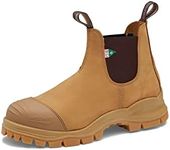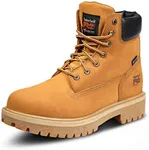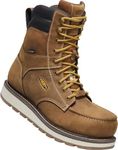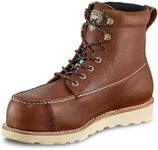Buying Guide for the Best Lightweight Work Boots
Choosing the right lightweight work boots is important for comfort, safety, and productivity, especially if you spend long hours on your feet or move around a lot at work. The best pair will protect your feet, reduce fatigue, and suit the specific demands of your job. To make a smart choice, you should understand the key features that affect performance and comfort, and match them to your daily activities and work environment.WeightThe weight of a work boot refers to how heavy or light the boot feels when worn. This is important because lighter boots reduce fatigue and make it easier to move quickly, especially if your job involves a lot of walking or standing. Lightweight boots are usually made with materials like synthetic fabrics or lighter leathers. If you need to be agile and move a lot, go for the lightest boots that still offer the protection you need. If your work is more stationary or requires extra protection, a slightly heavier boot may be acceptable.
Safety Toe TypeThe safety toe is the reinforced part at the front of the boot that protects your toes from impact or compression. Common types include steel, composite, and alloy toes. Steel toes offer the most protection but add weight, while composite and alloy toes are lighter and still provide good safety. If your job requires toe protection but you want to keep the boots light, composite or alloy toes are a good choice. If maximum protection is needed and weight is less of a concern, steel toes may be better.
MaterialThe material of the boot affects its weight, durability, breathability, and water resistance. Leather is durable and protective but can be heavier, while synthetic materials are lighter and often more breathable. If you work in hot environments or need to move quickly, synthetic or mesh materials are ideal. For rougher conditions or where durability is key, leather may be preferable even if it adds a bit of weight.
Sole TypeThe sole of the boot determines grip, comfort, and shock absorption. Rubber soles are common for their slip resistance and cushioning, while EVA or foam midsoles can make boots lighter and more comfortable. If you work on slippery or uneven surfaces, prioritize boots with slip-resistant rubber soles. For jobs that involve a lot of walking or standing, look for boots with cushioned, lightweight soles to reduce fatigue.
Waterproofing and BreathabilityWaterproof boots keep your feet dry in wet conditions, while breathable boots allow sweat and heat to escape, keeping your feet comfortable. Some boots offer both features, but this can add weight. If you work outdoors or in wet environments, waterproofing is important. If you work indoors or in hot climates, breathability may be more important to prevent sweaty, uncomfortable feet.
Fit and SupportA good fit and proper support are crucial for comfort and injury prevention. Lightweight boots should still provide enough arch and ankle support for your needs. If you have specific foot issues or spend long hours on your feet, look for boots with ergonomic insoles and good ankle support. Always try on boots with the socks you plan to wear at work to ensure the best fit.



















